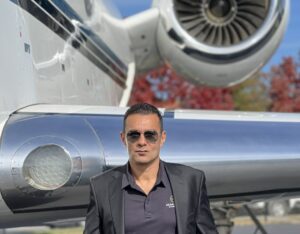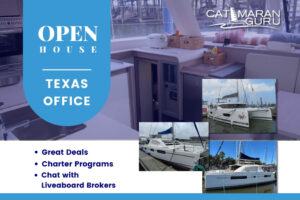
Top10: Legendary Seafaring Explorers.
by Norman Brown
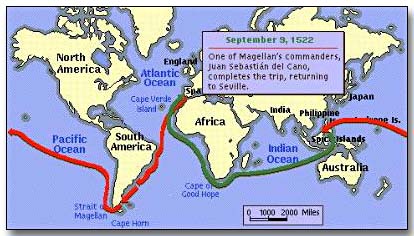 During the Renaissance, European kingdoms focused their attention on expanding their empires and searching for undiscovered lands. Cross-continental trade became a major facet of the European economy, and so a fast route to the wonders that East Asia offered was considered very valuable.
During the Renaissance, European kingdoms focused their attention on expanding their empires and searching for undiscovered lands. Cross-continental trade became a major facet of the European economy, and so a fast route to the wonders that East Asia offered was considered very valuable.
Later on in history, the mysteries of the four corners of the Earth enticed many to explore our planet’s most remote regions. These desires spawned a wealth of brave adventurers and explorers, gentlemen who overcame fear and a small chance of survival in the name of discovery for their respective countries.
In honor of these history-making masters of the sea, we count down the top 10 explorers, famous for their world-altering discoveries.
Number 10
Amerigo Vespucci
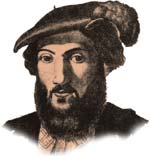 Born in Florence, Italy, Amerigo Vespucci grew up to be a merchant, cartographer and explorer whose actual exploits and discoveries are greatly disputed. In 1499-1500, Vespucci sailed westward from Italy in search of the new territories discovered by Columbus. He landed in present-day Guyana and then sailed south, becoming the first European to explore the Amazon river.
Born in Florence, Italy, Amerigo Vespucci grew up to be a merchant, cartographer and explorer whose actual exploits and discoveries are greatly disputed. In 1499-1500, Vespucci sailed westward from Italy in search of the new territories discovered by Columbus. He landed in present-day Guyana and then sailed south, becoming the first European to explore the Amazon river.
Another voyage to South America, this time under the Portuguese flag, confirmed to Vespucci that he had indeed found a new continent, and not Asia (as Columbus had believed). Historians have cast doubt upon the accounts of two of Vespucci’s subsequent voyages due to the fact that two of his most famous letters, New World and The Four Voyages , seem to have been falsified. Nevertheless, his earlier discoveries are meritorious.
Claim to Fame: Vespucci was one of the first to believe that South America was a new continent, and he also influenced the name “America,” which was derived from the Latin form of his given name, Amerigo.
Number 9
Juan Ponce De Leon
A friend of Christopher Columbus’, Ponce de Leon sailed with him during his second expedition to America. By decree of the Spanish Crown, Ponce de Leon became the first Governor of Puerto Rico and established the first settlement on the Caribbean island.
After Columbus’ son Diego claimed Ponce de Leon’s gubernatorial title, Juan was given the opportunity to explore the northern Caribbean, and he traveled through Cuba and the Bahamas. Ponce de Leon’s story becomes more romanticized after his stop in the Bahamas, as history recounts that he sailed north in search of the Fountain of Youth. Though this search for eternal youth is much debated, there is no debate that when Ponce de Leon landed in Florida in 1513, he became the first European to visit the future USA.
Claim to Fame: True or not, Ponce de Leon is famous for allegedly searching for the Fountain of Youth, in addition to discovering and attempting to colonize Florida.
Number 8
Vasco Nunez De Balboa
Yet another 15th century European conquistador, Spaniard Vasco Nunez de Balboa sailed for Hispaniola in 1501 and settled down on the island as a planter after visiting present-day Colombia and Panama. After being driven out of Panama by local tribes, Balboa returned to Spain and developed a town.
However, his rebellious conduct eventually forced him to flee the village and he decided to return to South America. On September 1, 1513, Balboa crossed the isthmus of San Blas and caught sight of an enormous body of water. As he erected a cross and claimed the ocean in the name of Spain, he named the waters Mar del Sur (South Sea).
Claim to Fame: Balboa is recognized as the first European to see the Pacific Ocean. He also colonized a town in Panama which is the oldest existing European settlement in the Americas.
Find out who discovered Canada, the North Pole and more…
Number 7
Roald Amundsen
A Norwegian adventurer whose desire to explore the Earth’s extremes knew no bounds, Amundsen made a name for himself in 1903 after he became the first to cross the Northwest Passage between the Atlantic and Pacific Oceans to what is now Gjoa Haven, Nunavut, and Canada.
Wishing to embark on a second mission, Amundsen intended to be the first to reach the North Pole, but after two explorers already announced that claim, the Norwegian turned his sights to the South Pole. In 1910, he set out for Antarctica and in January 1911, he and his crew arrived at the Ross Ice Shelf at the tip of the ice continent. In a historic race against fellow explorer Robert Falcon Scott, Amundsen set out for the pole on October 20, 1911, and arrived on December 14, only 35 days before his competitor.
Claim to Fame: Amundsen is recognized as being the first to reach the true South Pole in Antarctica.
Number 6
John Cabot
Like his countryman Christopher Columbus, the curious Genoese captain John Cabot (Giovanni Caboto) wished to reach eastern Asia and all the treasures that the area held. He headed to England and convinced King Henry VII that a trip through the northern Atlantic would be the quickest way to reach Asia. Of course, Cabot didn’t know of the existence of North America, since Columbus had never reached that far north during his quests.
In search of Asia, Cabot landed in Newfoundland on June 24, 1497. He and his crew became the first Europeans since the Vikings to have set foot on North American soil. For a month, Cabot explored the island before heading back to Bristol, England bearing news of the discovery of the New World.
Claim to Fame: John Cabot is credited as being the modern discoverer of Canada.
Number 5
Robert Edwin Peary
A legend of polar exploration, Pennsylvania native Robert Edwin Peary made several cracks at reaching the North Pole. In his many expeditions, he learned how to survive in the extreme cold by imitating Inuit practices. Putting these techniques to use, Peary embarked on his last northbound mission on July 6, 1908 from >New York City.
After wintering on Ellesmere Island, Peary left his last support team behind on April 1, 1909, and, with one American and four Inuit explorers accompanying him, attempted to reach the North Pole. Six days later, Peary had accomplished his lifelong dream and wrote in his diary, “The Pole at last!!!”. As the first man to reach the Pole, Peary became a hero following his return to the US.
Claim to Fame: Peary is recognized as a seasoned polar explorer who reached the North Pole before any of his equally adventurous adversaries could do so.
Number 4
Marco Polo
 Along with his uncle and father, Venetian explorer Marco Polo became one of the first Westerners to navigate through the complex eastbound Silk Road that leads to China. In 1271, the Polos headed back to China (the elder Polos had visited in 1266) and met with the Great Khan of the Mongol Empire, Kublai Khan (Genghis’ grandson).
Along with his uncle and father, Venetian explorer Marco Polo became one of the first Westerners to navigate through the complex eastbound Silk Road that leads to China. In 1271, the Polos headed back to China (the elder Polos had visited in 1266) and met with the Great Khan of the Mongol Empire, Kublai Khan (Genghis’ grandson).
Marco settled in China and became the Khan’s emissary. He lived there for 17 years and returned to Europe with a wealth of knowledge about the advanced Mongols. He was the first to accurately document observations of the East in his book Il Milione , and he soon became a sensation in his homeland.
Claim to Fame: Polo opened Europeans’ eyes to the practices of other cultures thanks to his nearly two-decade-long trip to China. Of course, he also lent his name to a popular children’s hide-and-seek-type game.
The first European to set foot in America and the first to circle the globe…
Number 3
Vasco Da Gama
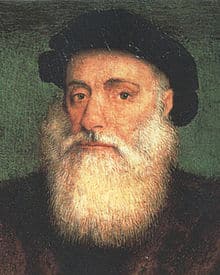 After so many European explorers tried and failed to find an appropriate route to India, one man finally accomplished the feat. Vasco da Gama was born in Sines, Portugal and followed in his father’s footsteps as an explorer. When the elder da Gama passed before he could search for a safe passage to India, Vasco took up the task.
After so many European explorers tried and failed to find an appropriate route to India, one man finally accomplished the feat. Vasco da Gama was born in Sines, Portugal and followed in his father’s footsteps as an explorer. When the elder da Gama passed before he could search for a safe passage to India, Vasco took up the task.
He sailed southwest to the open waters of the Atlantic, and then headed southeast around Africa, stopping several times along the continent’s eastern ports. After passing modern-day Mozambique, da Gama and crew found their way to the Indian subcontinent. Portugal then became a leader in exploration and trade as da Gama showed off his political and negotiation skills with India’s elite in order to obtain the goods Europeans valued so highly.
Claim to Fame: Da Gama played a large part in Portugal’s ascension to naval and colonial superiority, and was the first to sail straight from Europe to India.
Number 2
Christopher Columbus
In an attempt to reach the Far East by going westward from Spain, the adventurous Genoese explorer and trader known as Christopher Columbus left in search of a new passage through the “Ocean Sea” (Atlantic Ocean) on August 3, 1492. Sailing the Nia, the Pinta and the Santa Maria under the flag of Castilian Spain, Columbus and crew battled fear and homesickness until they reached the Caribbean in October of the same year. Columbus encountered natives on the islands of Cuba and Hispaniola, and was so lost that he thought that the mountain peaks on these islands were part of the Himalayas.
On his second trip one year later, Columbus returned to the Caribbean and discovered many of the islands of the Lesser Antilles, included Antigua, Saint Martin and the Virgin Islands. After trading and conversing with many native tribes, Columbus returned to Spain and was hailed as a hero. His third and fourth voyages led to the exploration of Trinidad and Tobago, Jamaica, Puerto Rico, and much of Central America.
Claim to Fame: Columbus is regarded as the first European to reach and explore “America,” though he never landed in North America.
Number 1
Ferdinand Magellan
 An explorer whose name is familiar even to those who have never taken a history or geography class, Ferdinand Magellan is credited with captaining the first expedition to have circled the globe. Though born in Portugal, he became a naturalized Spaniard in 1517 and, with his knowledge of cartography and geography, gained the respect of Spain’s King Charles I.
An explorer whose name is familiar even to those who have never taken a history or geography class, Ferdinand Magellan is credited with captaining the first expedition to have circled the globe. Though born in Portugal, he became a naturalized Spaniard in 1517 and, with his knowledge of cartography and geography, gained the respect of Spain’s King Charles I.
Wishing to find a route eastward to the Spice Islands and gain a foothold in the lucrative spice trade, Magellan told his new king of his belief that there lay a passage in South America that would lead to Asia. With a large crew and five ships, Magellan left Seville, Spain on August 10, 1519, and headed southeast, curling around the southern tip of South America. Magellan found the waters to be calm, and named the ocean “Pacific” as a result. The journey then continued northwest and, during a stop in the Philippines, Magellan was killed in a battle with indigenous peoples. His crew took over and returned to Spain on September 6, 1522, having spent three years at sea.
Claim to Fame: Ferdinand Magellan was the first to navigate the southern strait in South America that connects the Atlantic and Pacific Oceans (now knows as the Strait of Magellan), and was also captain of the first expedition to ever circumnavigate the globe.
Legends Of History
Whether motivated by dreams of wealth, fame, new worlds, or simply the glories of discovery, these explorers made their mark in history’s books. Even if some of these adventurers got lost on the way, their discoveries forever influenced the fate of mankind.


